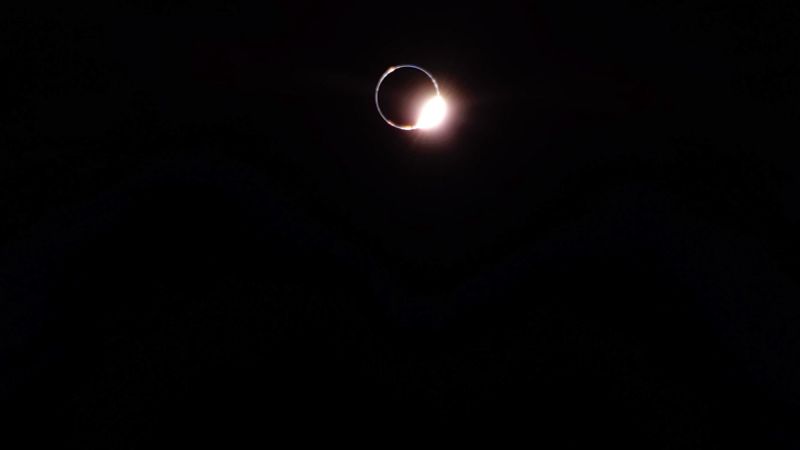In the early hours of Friday, a spectacular celestial event unfolded as parts of the Earth experienced a total lunar eclipse. Simultaneously, a spacecraft stationed on the moon captured the scene from an entirely different vantage point: a solar eclipse manifesting as a stunning fiery ring in the vastness of space. This unique perspective was facilitated by the Blue Ghost lunar lander, designed and operated by the Dallas-based company, Firefly Aerospace. The lunar lander successfully made its landing on March 2 and has since been pivotal in capturing detailed imagery of the moon’s surface and its cosmic surroundings.
Firefly Aerospace announced that the Blue Ghost lander documented the solar eclipse around 4:30 a.m. ET, showcasing the alignment of the sun, Earth, and moon. This impressive capture is particularly noteworthy as it recorded the “diamond ring” effect – a phenomenon where sunlight filters through just before and after totality, when the Earth completely obscures the sun. Such breathtaking imagery reflects not only a significant cosmic event but also highlights the technological advancements we have made in space exploration.
In addition to these remarkable images, Firefly Aerospace released a compilation of footage. This video was crafted from numerous images rapidly taken during the solar eclipse, illustrating the spacecraft appearing to bathe in a deep hue of red. This distinctive color emerges as sunlight refracts through the Earth’s atmosphere, resulting in an intriguing shadow being cast on the lunar surface. Will Coogan, chief engineer of Blue Ghost, expressed immense pride in their achievement, noting, “This is the first time in history a commercial company has ever been operational during an eclipse on the Moon.” This underscores the significant milestone achieved by Firefly Aerospace in the realm of space exploration, particularly in operational capabilities.
As detailed in a report shared by Firefly on X (formerly Twitter), the lander’s X-band antenna—responsible for sending back data and images—had to acclimate to the cold temperatures experienced during totality. The atmospheric conditions on the Moon can result in temperatures plummeting below -100°C (-148°F), presenting a challenge for the spacecraft as it operated solely on battery power during the nearly five hours of darkness. Coogan remarked on the exceptional effort of the team, stating, “This team continues to raise the bar and make achievements that are incredibly difficult look easy.”
Historically, the capture of an eclipse from the moon has been achieved only once prior. In 1967, NASA’s Surveyor 3 lander documented the first recorded view of an eclipse, which was critical in preparation for the Apollo missions that followed. Fast forward to 2023, and the Blue Ghost lander has been sharing captivating images of the lunar landscape since its launch from Earth on January 15. Looking forward, Firefly plans to document the lunar sunset, an event anticipated to occur very soon.
The phenomenon of lunar sunset is characterized by the moon’s horizon glowing, a visual effect believed to be caused by sunlight scattering through particles in the lunar atmosphere. Jason Kim, CEO of Firefly Aerospace, expressed his excitement about the upcoming lunar sunset, as it is a rare sight experienced by only a select few, specifically the astronauts on Apollo 15 and 17 missions. He stated, “We’re going to be able to capture that in 4K-by-4K high-definition video and share that with the rest of the world,” indicating the widespread interest in these spectacular lunar phenomena.
Furthermore, the Blue Ghost lunar lander is not solely focused on capturing stunning visuals; it is also equipped with ten NASA science and technology instruments as part of the Commercial Lunar Payload Services (CLPS) initiative. This initiative is a crucial component of NASA’s overarching Artemis program, aiming to return astronauts to the moon for the first time in over fifty years. The primary objective of these instruments is to study the moon’s subsurface and gather data on lunar dust and regolith.
In conclusion, as the Blue Ghost lander continues its mission, it will further operate during the lunar night. However, the harsh conditions may force the spacecraft to stop its operations as it endures the impending darkness and cold once again. This innovative project not only enriches our understanding of the Moon but also signifies the collaboration between commercial enterprises and governmental space agencies, paving the way for future explorations and discoveries in our solar system.












